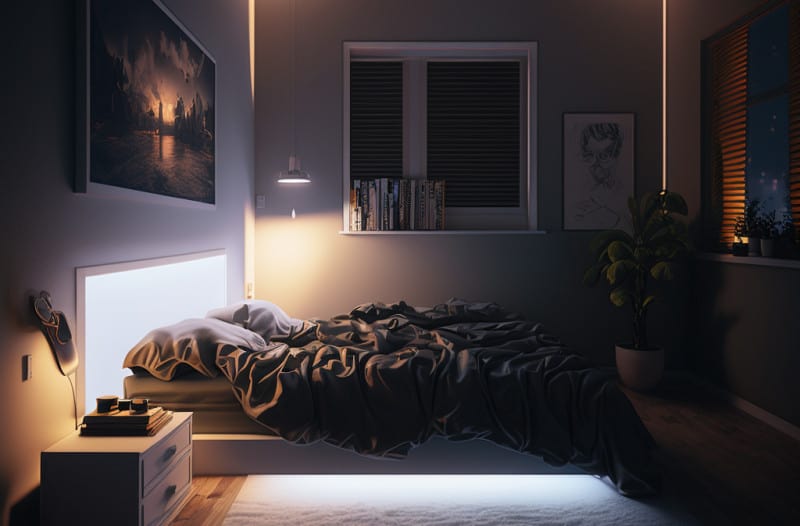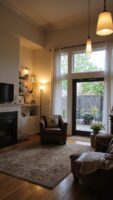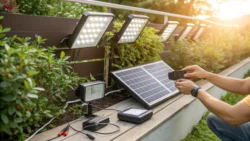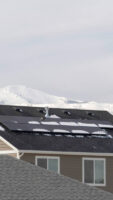LEDs have become increasingly popular in recent years, and for good reason.
They are incredibly energy-efficient and long-lasting, making them an ideal choice for lighting your home.
In this article, I’ll provide a comprehensive overview of what LED lights are, their benefits, and tips for choosing the right ones.
Whether you’re looking to save money on your monthly electricity bill or want to make an eco-friendly choice that helps reduce your carbon footprint, LEDs offer many advantages.
With this guide, you can make an informed decision about which LED lighting option is best suited for your needs.
What Are LED Lights?
Have you ever wondered why LED lights have become so popular?
It’s likely because they offer a number of advantages over other forms of lighting.
The theory that LED lights are the most energy efficient and have the least environmental impact is true – but how exactly do they work?
LED stands for Light Emitting Diode, which is a semiconductor device that converts electricity into light.
LEDs produce light in a different way to traditional bulbs, using less energy and emitting less heat.
This makes them much more efficient than incandescent or fluorescent bulbs, making them ideal for both residential and commercial use.
LED lights also last longer than other types of lighting, with some models lasting up to 50 times longer than traditional bulbs.
Not only does this reduce the need for frequent replacement, but it also helps to reduce energy costs over time as well as providing an environmentally friendly solution.
With their impressive energy efficiency and low environmental impact, it’s no wonder why LEDs are becoming increasingly popular in both domestic and commercial settings.
Benefits of LED Lights
I’m sure you’ve heard all the buzz around LED lights: they’re energy efficient, eco-friendly, and can save you money in the long run.
But why should you really care?
Well, LED lights offer some great benefits that make them worth considering.
For starters, they use up to 90% less energy than traditional lighting, which means lower power bills and a smaller environmental footprint.
And with the rising cost of electricity, switching to LED lights can be a great way to save on your monthly utility bill.
Since they last up to 50 times longer than traditional bulbs, this also means fewer trips to the store for replacements and no more worrying about burnt out bulbs in hard-to-reach places.
Plus, LED bulbs are durable and resistant to shock, vibrations, and temperature changes—so you don’t have to worry about them breaking easily.
Here’s a quick list of all the benefits of LED lights:
- Energy savings
- Longer lifespan
- Durability
- Environmental impact
It’s not hard to see why so many people are making the switch to LEDs—they’re an economical choice that will help reduce your carbon footprint while still providing high quality lighting for years to come.
Factors to Consider When Choosing LED Lights
First and foremost, you’ve got to think about brightness.
LED lights are measured in lumens, which is a fancy way of saying how much light they produce.
The higher the lumens, the brighter the light!
So, consider the area you want to light up and choose an LED light with the appropriate lumens.
Just remember: a small room might need about 1,000-2,000 lumens, while larger spaces may require 3,000 lumens or more.
You can find this information right on the packaging or product description.
Color temperature is another important factor.
This is measured in Kelvins (K), and it describes how warm or cool the light appears.
Lower values (like 2,700K) produce a warm, cozy glow, while higher values (like 6,500K) create a cool, crisp light.
Think about the mood you want to set in your space and choose an LED light with the right color temperature for that vibe.
For example, a cozy reading nook might benefit from a warm 3,000K light, while a home office could use a cooler 5,000K light to help you stay focused.
LED lights are already more energy-efficient than traditional incandescent bulbs, but some LEDs are even more efficient than others.
Keep an eye out for the ENERGY STAR label, which means the LED light meets strict energy efficiency guidelines.
Choosing an ENERGY STAR certified LED light will save you money on your energy bill in the long run, and you’ll be doing your part to help the environment, too.
Types of LED Lights
LED lights are a popular and efficient form of lighting, but it’s important to understand the different types available. Knowing which type of LED light is best for your needs can save you money in the long run, as well as helping you get the most out of your lighting system.
The three most common types of LED lights are: high power LEDs, low power LEDs, and low cost LEDs.
High power LEDs have a longer lifespan and use more energy than their counterparts, making them more expensive upfront but often offering greater savings over time due to their longevity.
Low power LEDs are cheaper upfront but may need to be replaced more frequently than higher-powered models. Low cost LEDs are the cheapest option up front, but they won’t offer the same level of energy efficiency or longevity as other models.
When deciding which type of LED light is right for you, consider both the initial cost and its expected life span.
High-power LED lights may be pricier upfront, but their energy efficiency and extended lifespan make them worth considering if you’re looking for an investment that will pay off in time.
Low power LEDs offer a lower initial cost, while low-cost LEDs may be best suited for short-term projects or applications where durability isn’t essential.
Ultimately, it’s important to weigh all your options before making a decision about which type of LED light is right for you.
Installation Tips for LED Lights
Installing LED lights is a great way to save energy and money. But you also need to be aware of some safety precautions.
To start, make sure the power source is turned off before attempting installation.
It’s also important to check for any frayed wiring, and ensure that all connections are secure.
Avoid touching the bulbs with your bare hands as oils from your skin can cause them to overheat and fail prematurely.
It’s always best to follow manufacturer’s instructions when installing LED lights. Depending on the type of lighting you are using, it may require additional components such as dimmers or drivers in order for them to function properly.
When installing dimmers or drivers, be sure they are compatible with your LED lights because using an incompatible component can cause damage or even lead to hazardous conditions such as fire or electric shock.
Before turning on the power switch, double check that everything is securely in place and that all connections have been made correctly.
Once satisfied with the installation, flip the power switch and enjoy the energy savings!
Conclusion
LED lights are an energy-efficient and cost-effective way to light up your home.
With all the different types of LED lights available, it can be hard to decide which one is right for you.
However, by considering the factors mentioned above and following some basic installation tips, you can ensure that you make the best decision possible when it comes to choosing LED lights for your home.
The best part?
Once you have them installed in your home, you will be able to enjoy their benefits for years to come!





